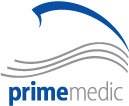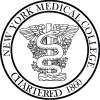Module 2: Management, Treatment, and Follow-up of Testosterone Deficiency Syndrome
PROGRAM GOAL
This activity aims to provide primary care professionals with the skills necessary to identify patients for whom testosterone replacement therapy (TRT) is appropriate and define appropriate treatment goals. Participants will gain confidence to knowledgeably discuss the FDA-approved TRT formulations with their patients, including the typical timeline of symptom improvement, risks, and safety profiles. Healthcare professionals will also learn about suitable monitoring tests and frequencies for optimal patient-centered outcomes.
TARGET AUDIENCE
This learning activity is intended for a broad audience of healthcare practitioners including physicians, physician assistants, pharmacists, registered nurses, and nurse practitioners who are involved in the care for patients presenting with testosterone deficiency syndrome (TDS).
TYPE OF ACTIVITY
Knowledge
LEARNING OBJECTIVES
As a result of participation in this activity, the participant will be better able to:
- Discuss available testosterone replacement formulations
- Describe the goals of TRT
- Monitor response to TRT at recommended intervals
- Explain the benefits of and contraindications to TRT
- Identify alternative or complementary approaches that may be utilized to treat the manifestations of TDS
FACULTY
Alvaro Morales, MD, CM, FRCSC, FACS
Professor Emeritus
Department of Urology
Queen's University
Kingston, Ontario
Ronald Swerdloff, MD, MACP
Professor of Medicine
David Geffen School of Medicine at UCLA
Los Angeles, California
Chief, Division of Endocrinology, Metabolism & Nutrition
Harbor-UCLA Medical Center
Torrance, California
Module Overview
This module combines several multimedia offerings to provide a complete educational program on the treatment and monitoring of TDS.
- A comprehensive and illustrated slide deck including expert slide notes,
references, and links to PubMed articles for additional reading
- A video presentation by an expert author reviews the key points presented in
Module 2 of this program
- A video case study with expert commentary presents a 68-year-old patient with a family history of prostate cancer asks questions and provides
best-practice recommendations on TDS management
- An audio-narrated animation summarizes the safe and appropriate use of TRT in
elderly men. This animation addresses the most important safety topics for the
participant and may also serve as a demonstration tool for healthcare
professionals to use with their patients
- Pre- and post-activity questions assess the current frequency of strategy use in
participants’ daily practice and allow for participant self-assessment of the
learning
Key Teaching Points
Through participation and interaction in this module, the participant will be introduced to the following key teaching points:
- Men with TDS should be managed with individualized treatment plans. These plans
should be developed using an approach contained in an acronym like ESCAPE
(Efficacy, Safety, Convenience, Availability, Price, Experience)
- Monitoring is mandatory to adjust dosing (if necessary) and evaluate symptom
improvement
- Alternative or adjunctive treatments should be considered when patients show
nonresponse to conventional testosterone replacement
Brought to you by


ACCREDITATION

|
This activity has been planned and implemented in accordance with the Essential Areas and Policies of the Accreditation Council
For Continuing Medical Education (ACCME) through the joint sponsorship of New York Medical College and Continuing Education Alliance.
New York Medical College is accredited by the ACCME to provide continuing medical education for physicians.
New York Medical College designates this Enduring Material for a maximum of 1.0
AMA PRA Category 1 Credit(s)™. Physicians should only claim credit commensurate with the extent of their participation in the activity.
|
 |
Continuing Education Alliance is accredited by the Accreditation Council for Pharmacy Education as a provider of continuing pharmacy education. This program is approved for 1.0 contact hour (0.1 CEUs). Universal Activity Number 0270-9999-13-002-H01-P. |
The estimated time to complete this activity is 1.0 hour.
Release date: August 23, 2013
Expiration date: August 23, 2014
This program is supported by an educational grant from AbbVie Inc.
The providers of this program have waived the processing fees.
FACULTY DISCLOSURES
All activity faculty and planners participating in continuing medical education activities sponsored by New York Medical College and Continuing Education Alliance are expected to disclose to the audience any significant support or substantial relationship(s) with providers of commercial products and/or devices discussed in
their presentation and/or with any commercial supporters of the activity. In addition, all faculty are expected to openly disclose any off-label, experimental, or investigational use of drugs or devices discussed in
their presentations.
The faculty and planning committee have been advised that this activity must be free from commercial bias, and based upon all the available scientifically rigorous data from research that conforms to accepted standards of experimental design, data collection, and analysis.
Dr Morales: advisory board/honoraria: Abbott Laboratories, Eli Lilly and Company;
consultant: Abbott Laboratories, Bioniche Life Sciences Inc., Eli Lilly and Company.
Dr Swerdloff: consultant: Abbott Laboratories, Clarus Therapeutics;
grant support: Clarus Therapeutics.
The Planning Committee for this activity included Margaret Astrologo and Kathy J. Kavanagh of New York Medical College; Ruth Cohen and Margaret Inman of Continuing Education Alliance; and David Searle of Prime Medic Inc. The members of the Planning Committee have no significant relationships to disclose.
DISCLAIMER
The opinions or views expressed in this CME/CPE activity do not necessarily reflect the opinions or recommendations of Abbott Laboratories, Continuing Education Alliance, Mechanisms in Medicine Inc., or New York Medical College.
© 2013 Continuing Education Alliance. All Rights Reserved. CAE81413-2
How to Receive Credit
Participants wishing to earn CME/CPE credit must:
Successful completion of the self-assessment is required to earn CME/CPE credit. Successful completion is defined as a cumulative score of at least 70%. A certificate of credit will be automatically generated upon successful completion of the activity.
Technical Requirements